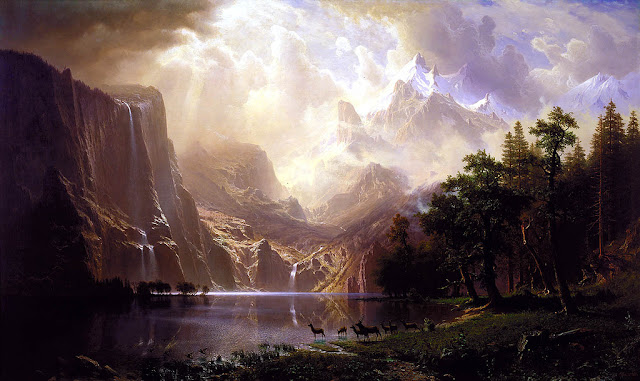Romantics interpreted his pictures as depictions of the landscapes of the inner mind, along the lines of what would later be associated with Freud and Dali.
Here (above) Martin depicts Macbeth but for some of his contemporaries he seemed also to convey the majesty and tumult of the inner mind. How, reasoned the Romantics, could man ever be happy as a slave or as the victim of a life of quiet desperation when his true mission is to heroically wander the vast inner landscape of the mind?
That sounds like an Eastern concept...did Indian philosophy affect the West in the 19th Century? I guess it did...look at Schopenhauer.
To judge from the pictures, Martin unconsciously sees man as a tragic, Wagnerian figure. We're warriors who will spit in the eyes of the gods if need be, and that's why they're interested in us.
It's odd to think that a hundred years after Martin's lifetime the pendulum would swing the other way and man would in some places be perceived as a hapless statistic, possessing only an outer life.
Here's (above) a picture that influenced Ray Harryhausen. Ray was a huge fan of Martin and Gustav Dore.
Americans will no doubt react to Martin with the feeling that they've seen that kind of statement before. Well, that's because they have. Our high style of Western painting derives from American painters like Thomas Cole, and Cole was a pupil of John Martin's, Over here Martin's grandiose style was put to the service of awe-inspiring landscape and the extreme Romantic philosophy was deleted. This adaption is a style that perfectly fits the American wilderness.
By the way, the picture above is by Bierstadt, who I assume was a pupil of Cole. As with most of the pictures in this post, it would benefit from a substantial enlargement. I wish I could have found a larger, high res version.
























































